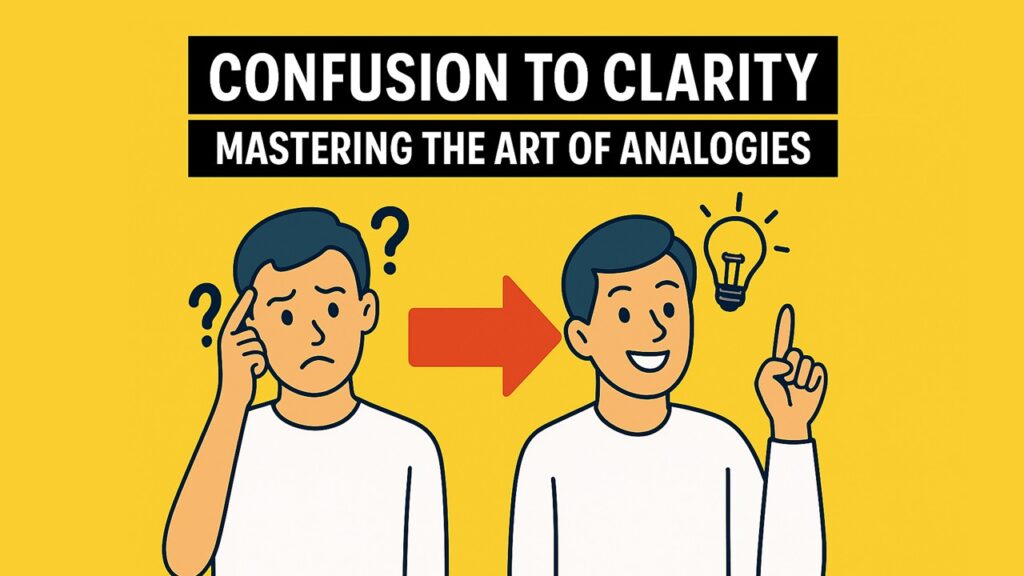Have you ever tried explaining a concept and been met with blank stares?
Maybe you’re a leader, trainer, coach—or just someone who needs to make the complex sound simple. And despite your best efforts, your audience looks confused. You know the feeling: polite nods, vacant eyes, maybe even a quick glance at a phone. That’s when you know… it’s not landing.
Enter: analogies—your secret weapon for moving people from “Huh?” to “Aha!”
Why Analogies Work
Analogies help people understand what they don’t know by connecting it to what they do know. They:
- Make abstract ideas concrete
- Engage the imagination
- Speed up understanding
- Make your message more memorable
Think about these classics:
- “Life is like a box of chocolates.” — Forrest Gump
- “A house divided against itself cannot stand.” — Abraham Lincoln
- “Time is money.” — Ben Franklin
These analogies stick because they tie big, abstract ideas to everyday experiences.
How to Build a Great Analogy
You don’t have to be a poet or philosopher to use analogies well. Here’s a simple formula:
- Know your audience.
What do they already understand or care about? - Clarify the unfamiliar concept.
What are you trying to explain? - Find a relatable comparison.
What’s something simple, concrete, or familiar that shares a structure or function? - Bridge the gap.
Describe how the familiar and unfamiliar are similar in a meaningful way.
Here’s an example I share in my video (below):
Managing a team is like conducting an orchestra.
Each person brings their own instrument and skillset. As the leader, your job isn’t to play every part—it’s to keep everyone in rhythm, adjust the tempo when needed, and make sure everyone knows when to shine.
Simple Practice: Word Analogies
These can warm up your brain and spark creativity. Try filling in the blanks:
- Car : Drive :: Plane : _______
- Pen : Write :: Hammer : _______
- Knowledge : Power :: Ignorance : _______
You can also try extended analogies for storytelling, persuasion, or presentations. For instance:
- Creating a speech is like building a house (you need a foundation, structure, finishing touches).
Try This:
Pick a concept you often explain—at work, in a presentation, or even to your kids. Then ask:
- What’s something relatable it reminds me of?
- How can I use that comparison to make the idea “click” faster?
BONUS: Watch the Video
Want a step-by-step guide with examples? Watch the video: Confusion to Clarity: Mastering the Art of Analogies
Whether you’re explaining the cloud to your parents or leading a training session, analogies can help your message stick—and make you a more confident communicator.

